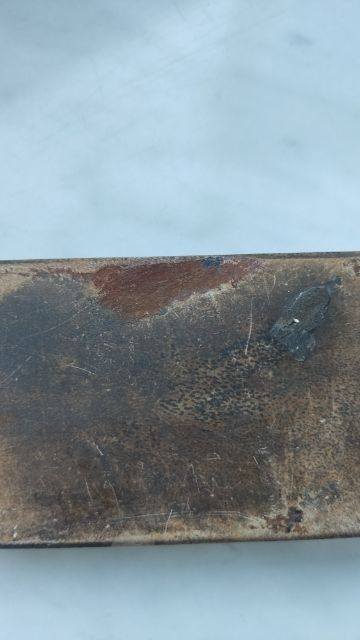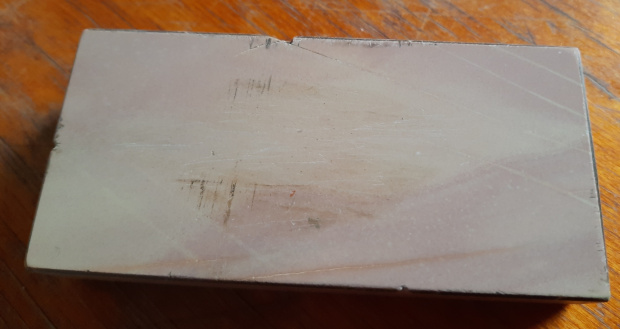Results 1 to 10 of 13
Thread: Hone identification.
-
10-10-2021, 03:34 PM #1Junior Member

- Join Date
- Nov 2017
- Location
- Poland
- Posts
- 22
Thanked: 1
-
10-12-2021, 07:12 PM #2

You can just make out the layering on the sides.
Pretty sure that is Hindostan from Indiana.
-
10-12-2021, 09:03 PM #3
-
10-12-2021, 09:15 PM #4Junior Member

- Join Date
- Nov 2017
- Location
- Poland
- Posts
- 22
Thanked: 1
I will have that stone tomorrow.
We'll see...
-
10-12-2021, 11:14 PM #5
-
10-13-2021, 01:59 AM #6

Story goes that there is many tons of them in some river in the UK. Uk goverment tossed them in the river because they believed they were from Hindustan, India not Hindostan Indiana. Something about some rebelion in that area in India.
Stone company almost went bankrupt because of it. They never compensated the company even though they were wrong in thowing them out.
So they are definately out in Europe.
-
The Following User Says Thank You to Toroblanco For This Useful Post:
jfk742 (10-13-2021)
-
10-13-2021, 05:40 AM #7Member

- Join Date
- Mar 2016
- Location
- indiana
- Posts
- 54
Thanked: 9
Extremely cool story. Never heard that one before. I live in northern Indiana and had never heard of Hindustan Indiana and Hindustan stones until I got involved with straights. There is more lore available on the web. A story of a boom town, epidemic, floods and the city treasurer taking off with all the towns funds in silver and gold, never to be heard from again.
As I understand it, a lot of the sharpening stone inventory was shipped over seas to Europe and the big market for the stone in the US was for grave stones. Because of river borne shipping , I think I read they were popular in the New Orleans area.
The picture makes it look like a harder finer material than most........doesn't look as sand stoney.
-
10-13-2021, 08:48 PM #8

Didn't make the hindostan connection before as the pictures and possible color balance are not the greatest. It would be good if you can provide better shots of the stone and its sides after cleaning it up after arrival.
I have seen old hindostan stones for sale on UK sites, so there was a market there. How far this went into Europe is another question. According to the Griffith Shaving Goods site, Central Europe has access to a sedimentary sandstone hone from the Slovakian Mala-Fatra mountains, so I'm guessing that there may not have been a need for Hindostans.
That said, if the stone as shown resembles anything, it is closer to a Hindostan than a Rozsutec-type sandstone IMO.Last edited by Brontosaurus; 10-13-2021 at 08:50 PM.
Striving to be brief, I become obscure. --Horace
-
10-14-2021, 12:19 PM #9
-
10-14-2021, 04:32 PM #10

That stone did the Cinderella after the clean up.
You don't normally see Coti's without backing being that thick. One solid brick. Nice find!
Even the layering is usually more wavy and you have skin left on.
Size is very indicative of a Coti and the black spots.


 14Likes
14Likes LinkBack URL
LinkBack URL About LinkBacks
About LinkBacks













 Reply With Quote
Reply With Quote





